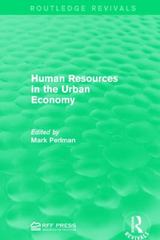Please help with the last three questions at the end v, vi, and vii
Suppose that the demand for units of some beverage comes from two types of household. They have the following utility functions representing their preferences of a household over units of the beverage (x1) and expenditure on all other goods (X2), UA(X1, X2) = x11/2x21/2 and UB(x1, X2) = 500 In(x1) + X2 The households have exogenous incomes of IA and I. The second 'good' is referred to as a 'composite' good and is an amount of money. We assume throughout that p2 = 1. We know: The ordinary demand functions for type A are x14* = lA/2p, and x2* = lA/2 The ordinary demand functions for type B are x15* = 500/p, and x2* B* = LA - 500 The market demand function for beverage is x = 51A/p1 + 5000/p1 The market supply function is x'S = 2p1 The equilibrium quantity is x* = 2[(51A + 5000)/2]1/2 and equilibrium price is p,* = [(51A + 5000)/2]1/2 Please answer the following: V) (3 marks) Suppose the exogenous incomes changed so that they became (IA + 100) and (IB - 100). Did aggregate income of the households change? Did the market equilibrium price and quantity change? If so, by how much? vi) (2 marks) If we were to have a market model where the demand side was composed of 20 households of only one household type (A or B), which type of household would allow the market demand to be expressed as a function of aggregate income, 201? vii) (6 marks) Explain this result by illustrating the effect of a change in income for each type of household (as in v)) using an indifference curve analysis for each household.There are two types of households, A and B. The type A has UA= X1 1/2x21/2 and the type B has UB = 500 In(x1) + X2 Here, X1 is beverage and x2 is all other goods or composite good. Also, the price of second good is p2 = 1. Both types of households have exogenous incomes IA and Ig. i) For type A, the budget constraint is, p1x1 + P2X2 =IA P1x1 + x2 = A The optimization problem becomes, Max UA = X11/2x21/2 Subject to, P1X1 + X2 = |A At utility maximization problem, MRS = MUX1/MUX2 = P1/P2 Here, MUx1 = (1/2)X1-1/2x21/2 MUX2 = (1/2)x11/2x2-1/2 Thus, (1/2)x11/2x21/2/(1/2)x1' -1/2 = P1 1/2x2 X2/X1 = P1 X2 = P1X1 Therefore, P1X1 + x2 = |A X2 + x2 = |A 2x2 = |A X2A* = 1A/2 Thus, X1A* = IA/2p1 For type B, the budget constraint is, pix1 + X2 = IB The optimization problem becomes,Max UB = 500 In(x1) + X2 Subject to, p1X1 + x2 = IB At utility maximization problem, MRS = MUX1/MUX2 = P1/P2 Here, MUX1 = 500/x1 MUX2 = 1 Thus, 500/x1 = P1 X1 = 500/p1 Therefore, P1X1 + x2 = IB 500 + X2 = A X2B* = IA - 500 X1 B* = 500/P1 Hence, for type A, the ordinary demand functions are X1A* = IA/2p1 and X2A* = 1A/2 for type B, the ordinary demand functions are X1 B*500/p1 and X2B* = IA - 500. ii) If there are 10 households of each type then the market demand function for beverage is, x = 10x]A* + 10x1B* x = 10*1A/2p1 + 10*500/p1 xd=51A/P1 + 5000/p1 iii) The cost function of each individual firm is c(x) =4x2 The average variable cost or average cost of the firm is AC(x) = 4x2/x = 4x Since, the AVC or AC is linear and starts from the origin then there is no minimum point and hence the supply function is derived from the p1 = MC condition.iii) The cost function of each individual firm is c(x) =4x2 The average variable cost or average cost of the firm is AC(x) = 4x2/x = 4x Since, the AVC or AC is linear and starts from the origin then there is no minimum point and hence the supply function is derived from the pi = MC condition. Here, MC = dc(x)/dx = 8x Thus, p1 = 8x x = P1/8 If there are 16 identical firms then the market supply function is x = 16p1/8 x3 = 2P1 iv) At equilibrium, Market demand = Market supply xd = xs 51A/P1 + 5000/p1 = 2p1 (51A + 5000)/p1 = 2p1 2p12 = 51A + 5000 P12 (51A + 5000)/2 P1* = [(51A + 5000)/2]1/2 Thus, equilibrium quantity is x* = 2[(51A + 5000)/2]1/2 and equilibrium price is p1* = [(51A + 5000)/2]1/2 where la is the exogenous incomes










